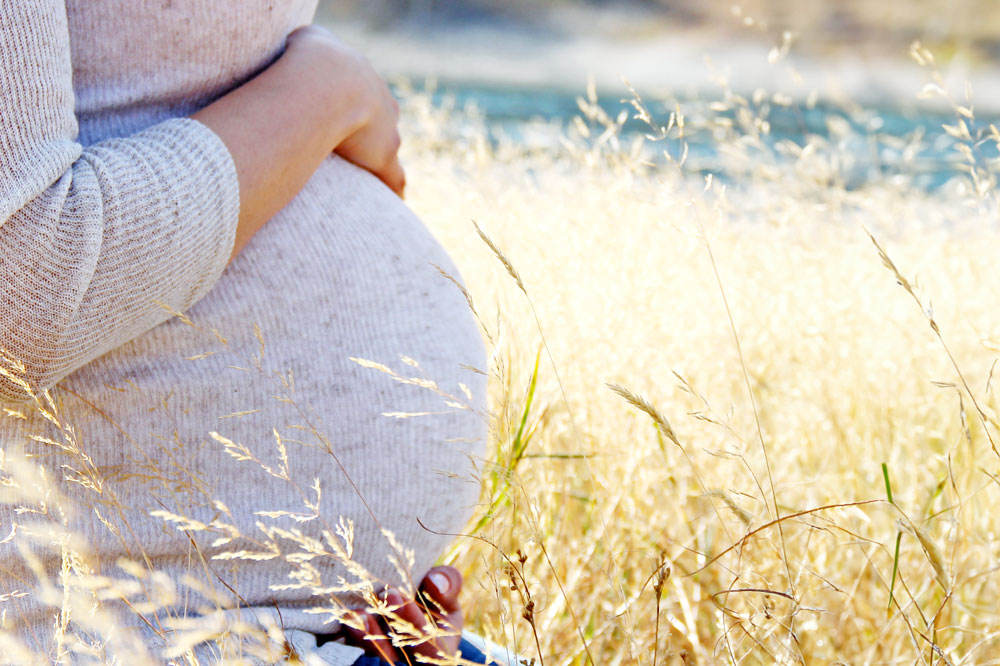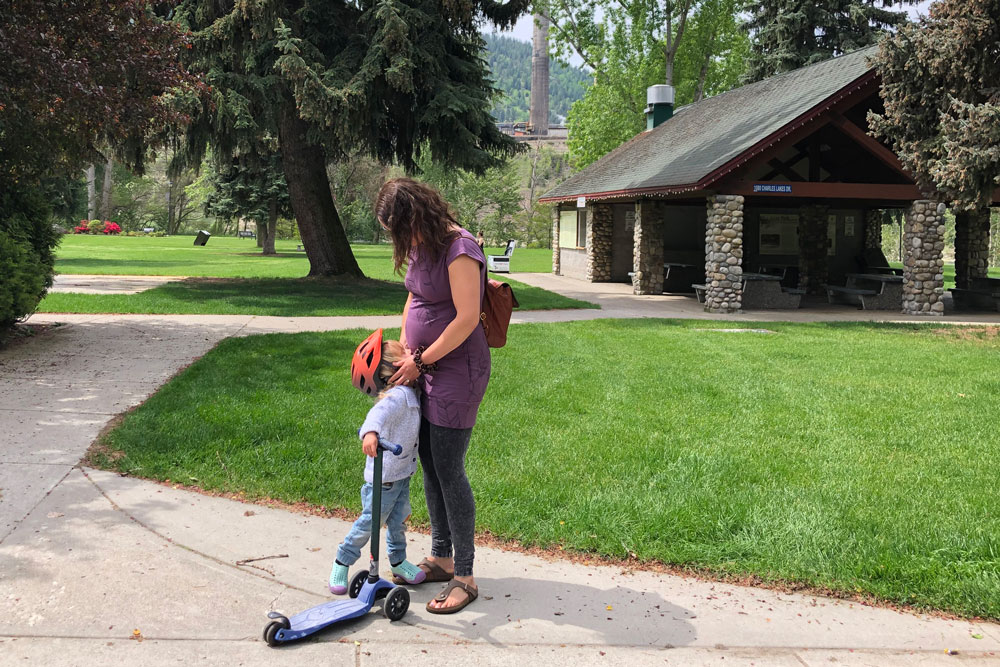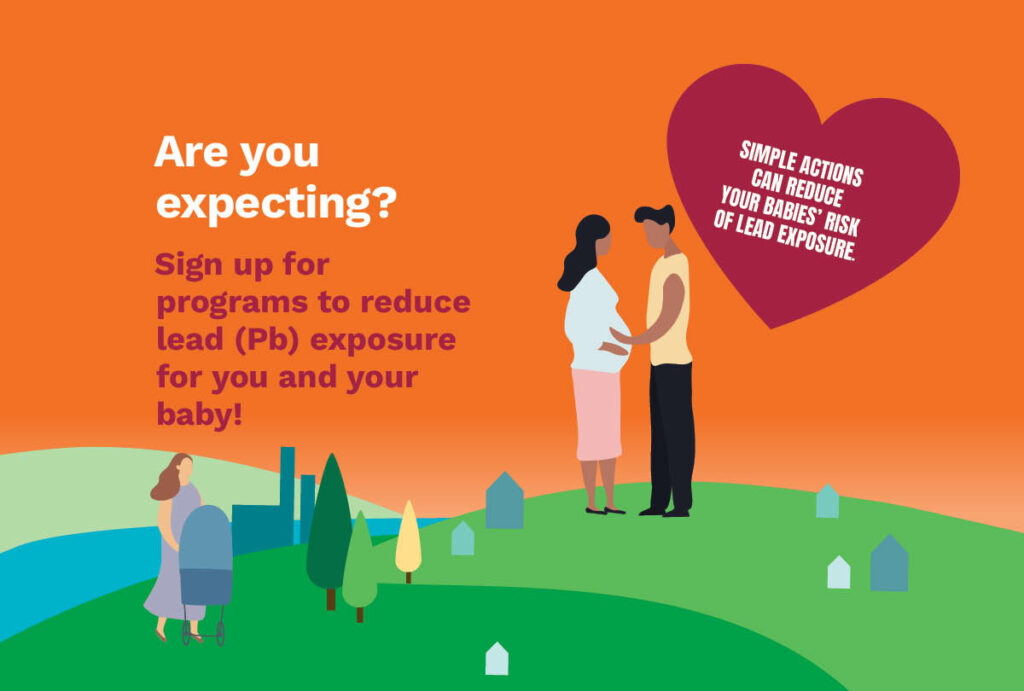- The Trail Community Lead Task Force did a study of the blood lead levels of pregnant women and their newborns born in Trail from November 1993 to December 1995. This was a time when children’s blood lead levels in Trail were more than four times higher than they are today. Key findings from that study showed that children born in Trail start out with blood lead close to the “normal background”. In addition, mothers who grew up in Trail did not appear to be exposed to any greater extent than those growing up outside of Trail. Results should still be true today.
- We encourage people planning a pregnancy or currently pregnant to discuss blood lead testing with their primary care or maternal care provider. Blood lead testing during pregnancy is optimally done after 20 weeks gestation.
Expecting Parents
Prevention of lead exposure is possible and simple actions can reduce your babies’ risk of lead exposure.


Lead exists in all communities however, there is more lead in Trail than a town without a lead smelter.
Lead is a naturally occurring element found in small amounts in the earth’s crust, and was commonly used in products such as paint and gasoline. Traces of lead can be found everywhere. Experts agree there is no known safe blood lead level.
Are you expecting?
Simple actions can reduce your babies’ risk of lead exposure.
For most people, the risk from the levels of lead in soil and dust is low. For children, particularly those under three years old, the risk is higher because of the fast rate of development and the way they interact with their environment.
- Babies and toddlers are more likely to transfer dust to their mouths when teething and playing.
- Young children are more likely to play in soil and get it in their mouths.
- Young children absorb lead at a higher rate.
Pregnant women can pass lead to their baby through their blood stream, and transfer it to newborns through breast milk.
Expectant families and those with children under three years can request an in-home visit from a public health nurse and Community Program Office staff.
- These experts will look more closely at nutrition, diet, and the home and yard environment. Pre-1990 homes may have lead in paint.
- They will connect you with community resources and groups that support early childhood development.
- They can provide useful supplies to reduce dust in the home environment, such as a vacuum, dust buster kits, hand soap, and lead-safe renovation resources and supplies.
To minimize exposure to lead:
Wash hands after playing outside and before eating.
Take off shoes at the door and use door mats.
Vacuum, mop and dust often, focusing on entryways, window ledges and countertops.
Cover bare soil in your yard with lawn, mulch, or landscape fabric.
Hose off outdoor furniture and toys often.

Consider removing paint safely if it is chipping or peeling.
Ensure you do not bring lead dust home from work on clothing, shoes and lunch kits.
Frequently ask questions about Maternal Health
Learning about possible sources of lead and how you and your child might be exposed can help you take action to reduce any risk.
Primary prevention is the most effective way to prevent lead exposure. Actions you can take to reduce the risk of lead exposure include:
- Wash your hands and your children’s hands especially before eating and after playing outdoors.
- Eat foods that have enough iron and other vitamins and minerals. A person who eats a balanced, nutritious diet may absorb less lead. Eat at the table.
- Keep your floors dust-free by vacuuming and damp mopping often. Leave outside shoes at the door. Damp dust frequently, especially window ledges and countertops.
- Keep outdoor play areas clean. Cover the sandbox when you are finished playing. Hose off patios, play equipment, and driveways often. Play on the grass and cover bare soil areas.
- Renovate safely. Seal off the area of work, and clean well when complete. Keep children and pregnant women away if possible.
Secondary prevention including blood lead testing and follow-up minimizes further exposure. Trail offers an annual voluntary blood lead testing clinic for children under five years old.
Trail Area Health & Environment Program (THEP) is designed to help you keep your children and family healthy and safe. Sign up for a FREE Healthy Families Healthy Homes visit at thep.ca or by calling 250-368-3256. Supports offered by signing up can include:
- Information and advice on easy ways to keep the home healthy and dust-free.
- Soil testing and/or a ground cover evaluation if your soil was previously tested.
- Paint testing to identify any potential lead-based paint in the home.
- Lead-safe renovation supports if you are planning renovation projects.
- Dust buster kit for qualifying properties.
- It is important to be informed about lead when expecting as a pregnant woman who is exposed to lead can pass it to her baby. Lead can also be passed to a baby through the mother’s breast milk.
- Prevention of lead exposure is possible and simple actions can reduce your babies’ risk of lead exposure.
- THEP offers free supports to expectant families including Lead Safe Renovation supplies, soil testing and Healthy Home visits, which can include indoor paint testing for lead.
- Experts agree there is no known safe level of lead exposure and no known safe blood lead level. Lead exposure can have detrimental effects on early childhood development and children’s future outcomes.
- As a new parent, it is important to know that most lead enters the body through the mouth via eating, drinking, or breathing in dust containing lead. Young children are at a higher risk for lead exposure and its effects because:
- They often put their hands and objects in their mouths.
- They sometimes swallow non-food items.
- Their bodies absorb lead at a higher rate.
- Their brains are developing quickly.
- Generally pregnant women and newborns are at low risk of adverse health effects from lead (Pb) exposure in typical every-day community situations. We strongly advise pregnant women and children avoid being exposed to dust from home renovation as this could result in higher than typical lead (Pb) exposure. This includes exposure to fine particles of lead paint in homes (this applies to any community). Please see our Lead-safe Renovation rack card for details.
- A mother’s blood lead level affects the blood lead level of the fetus during pregnancy and is only a concern in situations where the mother has experienced higher than usual exposure, such as work exposure, home renovations, or living in parts of the world where lead exposure may be high. If a woman is pregnant, or planning to become pregnant, in a higher exposure risk situation, she should be tested by her physician or, if the timing is convenient, at one of THEP’s blood lead testing clinics. Please contact THEP’s Public Health Nurse at 250-364-6223.
- If you work in an industry that has potential lead exposure, talk to your employer about blood lead monitoring and the potential for alternative work.
- A pregnant woman who is exposed to lead can pass it to her baby. Lead can also be passed to a baby through the mother’s breast milk.
Trail is home to one of the world’s largest lead and zinc smelting and refining facilities. Historical smelter emissions along with leaded gasoline and lead-based paint have also left legacy lead in the environment. Lead exists in all communities; however, there is more lead in Trail than a town without a lead smelter.
Low levels of lead exposure during the very early years can have impacts on children’s intelligence and attention. We also know that many things in a child’s environment can influence brain development (such as stress, trauma, nutrition, play, exploration, and nurturing).
The Trail Area Health & Environment Program (THEP) offers resources and supports to families who are expecting or have young children.
Are you expecting or have children under 3 years old?
All families in Trail, Casino, Oasis, Rivervale, Waneta and Warfield can sign up for two home visits focused on prevention of lead exposure and strengthening children’s healthy development.
Or message your public health nurse

